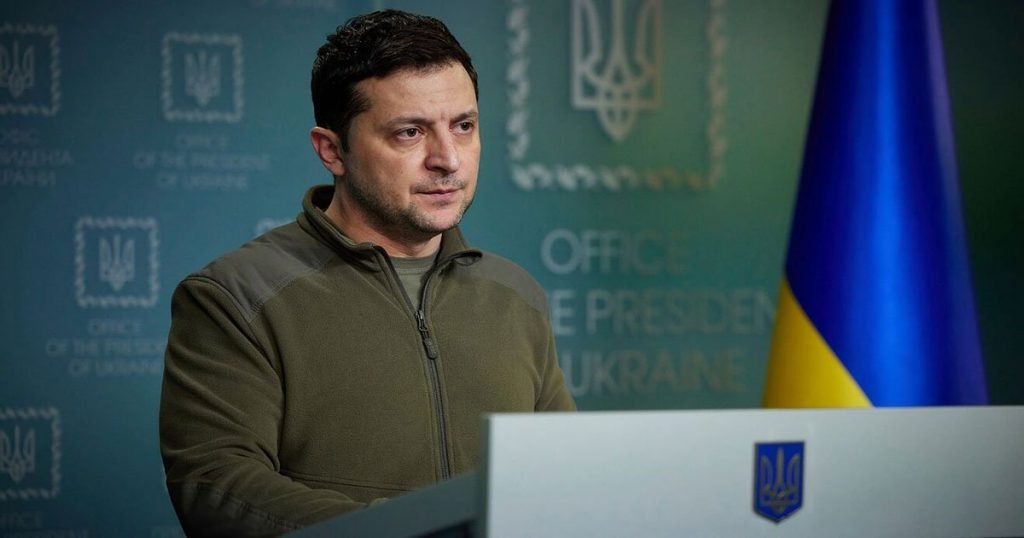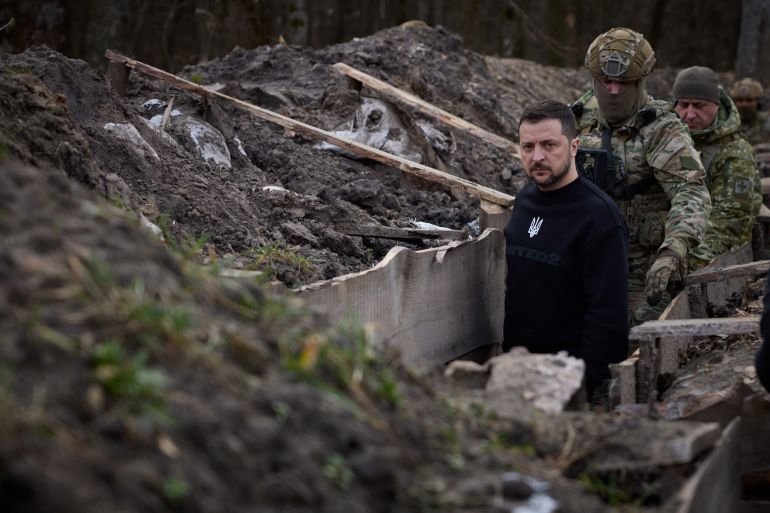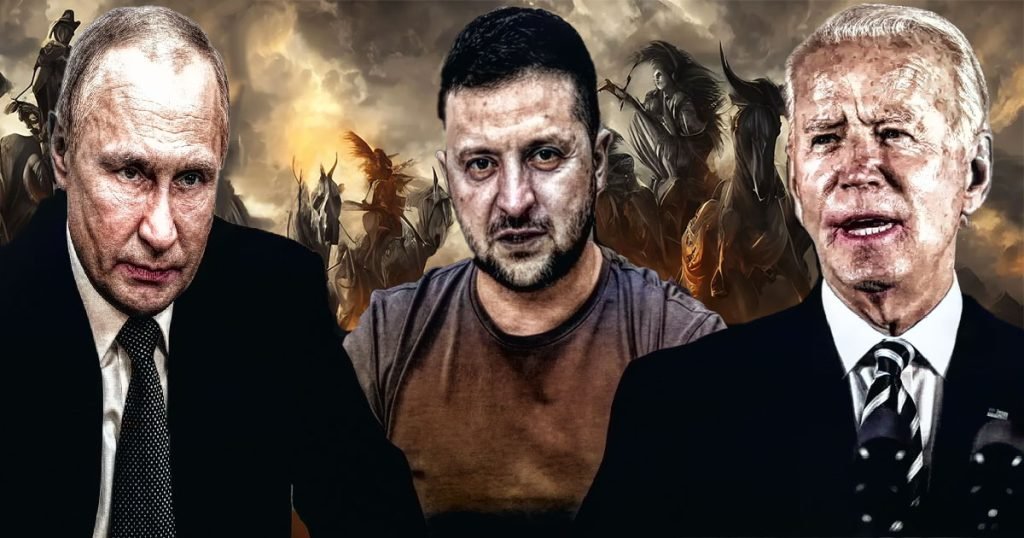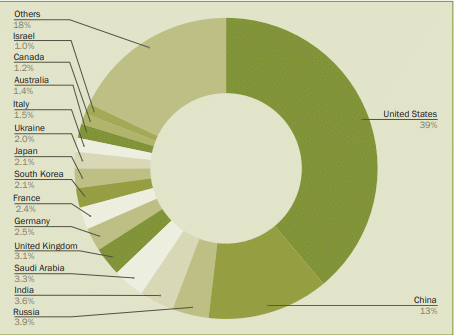Breaking the Fortress: Truth, Lies, and Secrets in American Geopolitics
“The United States is not a leaky old battleship, but rather a carefully constructed fortress designed to protect the interests of the powerful. However, no matter how many walls they build or how high they make them, the truth will always find a way to break through and reveal the secrets hidden within.”
These latest leaks, force us all to sift through them like detectives in a cheap thriller, trying to separate the lies from the truth and discern the hidden motives of those behind them. But when we examine the classified documents recently leaked on social media allegedly by Jack Teixeira, an airman first class of the Massachusetts Air National Guard or the internal memos of US four-star general Mike Minihan, one of the United States highest military commanders, a sense of unease grips us.
Pax Americana: A Pretext for Endless Conflict and Domination?
This Pax Americana is being established in the time-honoured Roman fashion, with the stomping of jackboots on pavement summoning forth the age-old adage of “Si vis pacem, para bellum”: if you desire peace, prepare for war. This mantra has become a tired old refrain, a pretext for endless conflict and domination, all in the name of securing global harmony. Yet the truth is, when America seeks to impose its version of peace on the world, it is often the harbinger of death and destruction.
Meanwhile, the world holds its breath in anticipation, Ukraine bleeds, sacrificed on the altar of American ambition. Meanwhile, the people of Taiwan are consumed by anxiety, fearing that they will be the next pawn in the never-ending game of war, fueling the insatiable appetite of the industrial arms complex, and churning out munitions with unrelenting fervour.
The grim reality of geopolitics rears its ugly head once again, as nations are used as chess pieces in the ruthless pursuit of power and profit. The consequences are dire, with innocent lives paying the ultimate price for the machinations of those in positions of authority. The pervasive influence of the military-industrial complex looms large, casting a shadow of perpetual conflict and suffering, with no end in sight.
The Present War…

Analysis: Biden Administration Braces for Potential Criticism as Ukraine’s Counteroffensive Looms.
As Ukraine prepares for its much-anticipated counteroffensive against Russian-seized territory, the Biden administration is quietly bracing for the possibility of criticism at home and abroad. While publicly expressing unwavering support for Ukraine, President Joe Biden’s team is privately concerned about the potential outcomes of the spring fighting season, and how it may be perceived by critics and allies alike.
Those concerns recently spilled out into the open during a leak of classified information onto social media. A top secret assessment from early February stated that Ukraine would fall “well short” of its counteroffensive goals. More current American assessments are that Ukraine may make some progress in the south and east, but won’t be able to repeat last year’s success.
Senior officials in Kyiv have not detailed specific operational plans for the counteroffensive, but it is expected to focus on retaking territory in the east and south. The Biden administration has pledged to provide weapons and economic aid to Ukraine for “as long as it takes,” but if the gains from the counteroffensive are limited, officials worry about facing criticism from both hawkish and dovish ends of the spectrum.
One camp may argue that Ukraine’s advances would have been more successful if the administration had provided Kyiv with longer-range missiles, fighter jets, and additional air defences. The other camp may claim that Ukraine’s failure to fully expel Russia from its territory demonstrates that force alone cannot remove the Russian presence. Furthermore, America’s allies in Europe may see a negotiated peace with Russia as a more attractive option if Ukraine is unable to prove that victory is within reach.
Administration officials stress that they are doing everything possible to support Ukraine’s counteroffensive, with one anonymous official stating that nearly all of Ukraine’s requests for weapons and equipment have been fulfilled. However, concerns about the effectiveness of Ukraine’s tactics have arisen behind closed doors, and leaked classified information from February indicates that Ukraine may fall short of its counteroffensive goals.
Ukraine’s hope of severing Russia’s land bridge to Crimea is now met with scepticism by U.S. officials, and there are doubts about Ukraine’s ability to push Russian troops out of their entrenched positions. Ukrainian President Volodymyr Zelensky has blamed inadequate arming by the U.S. for the delay in launching the counter-offensive.

Moreover, U.S. intelligence indicates that Ukraine simply does not have the ability to push Russian troops from where they were deeply entrenched — and a similar feeling has taken hold about the battlefield elsewhere in Ukraine, according to officials. Ukrainian President Volodymyr Zelensky says the U.S. hasn’t adequately armed his forces properly and so, until then, the counteroffensive can’t begin.
There are discussions within the administration of framing the counteroffensive as a “ceasefire” rather than permanent peace talks, with incentives offered to Ukraine such as security guarantees from NATO, economic assistance from the European Union, and additional military aid. The hope is also to engage China in pushing Russia to the negotiating table.
However, even if such a compromise is reached, the question remains of what happens next and how critics at home and allies abroad will respond. Some argue that if the counteroffensive does not go well, the Biden administration will be blamed for withholding certain types of arms and aid when they were most needed.
Due to high energy and economic costs, European support may also wane over time, leading to potential challenges in sustaining domestic support in the U.S. Congress and the Biden administration.
Biden and his top aides have publicly emphasised that Zelensky should only begin peace talks when he is ready, or to be more precise when Biden’s ready. However the reality of the changing political landscape in the U.S., with Republicans in control of the House of Representatives, means that the pace of U.S. aid to Ukraine may slow down. Washington officials have started preparing for what these conversations could look like, and they acknowledge that it may be a tough political sell for Zelensky at home.
Earlier this month, Andriy Sybiha, a deputy head in Zelensky’s office, told the Financial Times that Ukraine would be willing to talk if its forces reach Crimea’s doorstep. “If we will succeed in achieving our strategic goals on the battlefield and when we will be on the administrative border with Crimea, we are ready to open a diplomatic page to discuss this issue,” he said.
That comment was quickly rebuffed by Tamila Tasheva, Zelensky’s Crimea envoy:
“If Russia won’t voluntarily leave the peninsula, Ukraine will continue to liberate its land by military means,” she told POLITICO earlier this month.
It doesn’t help America’s confidence that the war has slowed to a brutal slog.
Ukraine Bleeds: Sacrificed on the Altar of American Ambition.

Both sides have traded punishing blows, focused on small cities like Bakhmut, with neither force able to fully dislodge the other. The Russian surge ordered up earlier this year, meant to revitalise Moscow’s struggling war effort, seized little territory at the cost of significant casualties and did not do much to change the overall trajectory of the conflict.
The fighting has taken a toll on the Ukrainians as well. Fourteen months into the conflict, the Ukrainians have suffered staggering losses — around 100,000 casualties — with many of their top soldiers either sidelined or exhausted. The troops have also gone through historic amounts of ammunition and weaponry, with even the West’s prodigious output unable to match Zelenskyy’s urgent requests.
U.S. officials have also briefed Ukraine on the dangers of overextending its ambitions and spreading its troops too thin — the same warning Biden gave then-Afghan President Ashraf Ghani as the Taliban moved to sweep across the country during the U.S. military withdrawal in 2021.
But the chances of Ukraine backing down from its highest aspirations is, to say the least, unlikely. “It’s as if this is the only and last opportunity for Ukraine to show that it can win, which of course isn’t true,” said Alina Polyakova, president and CEO of the Center for European Policy Analysis in Washington, D.C.
As the situation in Ukraine evolves, questions inevitably arise about whether a negotiated stop to the fighting may be necessary if Ukraine is unable to gain significant ground on the battlefield. Richard Haass, president of the Council on Foreign Relations, commented, “It’s increasingly difficult to see how the military conflict ends absent some sort of diplomatic or political outcome.” The Biden administration finds itself navigating a delicate balance between supporting Ukraine and managing potential criticism and challenges from various quarters as the counteroffensive approaches.
And if the US continue in its pursuit of conflict in the Taiwan Strait will both China and the US be fighting two fronts, one in Ukraine and the other in Taiwan? Will Russia’s struggle in Ukraine help Taiwan — or hurt it?
These events can’t be viewed in isolation; they are connected and part of a larger political competition for Eurasia.
The past was alterable. The past never had been altered. Oceania was at war with Eastasia. Oceania had always been at war with Eastasia.
― George Orwell, 1984

Global weapon expenditures hit a record $2.24 trillion in 2022, an increase of nearly 4%, according to the Stockholm International Peace Research Institute (SIPRI). The global watchdog found the trend was led by European countries returning to Cold-War spending levels, though the United States remained the world’s largest spender on war by far.
SIPRI released its latest annual report on Monday, finding that worldwide military expenditures had increased for the eighth consecutive year. Dr. Nan Tian, a senior researcher with SIPRI’s Military Expenditure and Arms Production Program, said “The continuous rise in global military expenditure in recent years is a sign that we are living in an increasingly insecure world.”
Overall European military spending increased by 13% in 2022. For many nations on the continent, weapons expenditures increased to levels not seen since the Cold War. During the same period, Finland (+37%), Lithuania (+27%), Sweden (+12%), and Poland (+11%) each increased their military budgets more than Russia, which saw a 9.2% jump amid the war in Ukraine. Kyiv’s year-to-year war spending increased by a staggering 640%, reaching $44 billion.
American military spending continues to smash records, having long held the number-one spot for military largesse. According to the SIPRI report, the nearly $20 billion in weapons Washington shipped to Kyiv in 2022 is the largest amount of security assistance one country has ever provided to another in a single year.
Additionally, the US remained the world’s largest military spender at $877 billion – more than the total military budgets of the next 11 top-spending countries combined. Many of the other high-spending nations are allies of Washington, with military expenditures among NATO members topping $1.23 trillion.
William Hartung, senior researcher at the Quincy Institute, explained that the increasing military outlays are a bad sign for peace while stressing the importance of diplomacy.
The Future War

The Next Pawn in the Game of War: Taiwan’s Anxiety and Fear.
Of course, Biden and the US may find themselves stretched if they continue with their present course of action in their pursuit to bring conflict to China.
Another leaked memo from a US four-star general that states his “gut” told him the US would be at war with China in 2025 has prompted warnings about the danger of “undisciplined” predictions of a Taiwan Strait conflict.
The memo, by the head of the US Air Mobility Command (AMC), Gen Mike Minihan, was the latest prediction of a Chinese military invasion of Taiwan, which have ranged from 2022 to 2049. It has triggered a debate about US readiness, accusations of warmongering, and concerns about desensitising people to the real risk of invasion.
“I hope I am wrong. My gut tells me we will fight in 2025,” Minihan wrote. “Xi’s team, reason, and opportunity are all aligned for 2025.”
Minihan’s jingoistic nine-point plan set out his “preparation for the next fight”. Dated 1 February but leaked on social media days before, it ordered increased training and integration of the AMC and joint forces, to “deter, and if required, defeat China”.
Timelines within the decade are usually about China’s capability. The director general of Taiwan’s national security bureau and its defence minister have said China would reach full invasion capability by, respectively, 2023 and 2025. Later dates are often based on China’s intention, picking years with symbolic significance for the Chinese Communist Party (CCP).
But it is not always clear. The US Secretary of state, Antony Blinken, said last year that China was determined to annex Taiwan “on a much faster timeline” but did not give a date.
Minihan’s prediction was quickly linked to statements in 2021 by the then head of the US Indo-Pacific command, Adm Philip Davidson, to a Senate committee hearing. In what is now referred to as “the Davidson window”, the admiral said he believed the Chinese threat to Taiwan would “manifest” in the next six years, by 2027.
Minihan’s memo was written off by many analysts as offering no evidence beyond his “gut” and crude assessments that 2024 elections in the US and Taiwan were good timing for an invasion.
“The most charitable interpretation of Minihan’s comments was that he was aiming them at his own organisation to spark change,” said Blake Herzinger, a nonresident fellow at the American Enterprise Institute thinktank. “The part that doesn’t make sense is releasing a memo with this sort of inflammatory language, unclassified, basically guaranteeing it would leak.
However, what we do know is Joe Biden has formally announced he will run for a second term as US president… Already the oldest president in history – Joe Biden would be 86 at the end of a second term... He wants to get the job done… We can live in fear…
By Paul Knaggs
Support Independent Journalism Today
Our unwavering dedication is to provide you with unbiased news, diverse perspectives, and insightful opinions. We're on a mission to ensure that those in positions of power are held accountable for their actions, but we can't do it alone. Labour Heartlands is primarily funded by me, Paul Knaggs, and by the generous contributions of readers like you. Your donations keep us going and help us uphold the principles of independent journalism. Join us in our quest for truth, transparency, and accountability – donate today and be a part of our mission!
Like everyone else, we're facing challenges, and we need your help to stay online and continue providing crucial journalism. Every contribution, no matter how small, goes a long way in helping us thrive. By becoming one of our donors, you become a vital part of our mission to uncover the truth and uphold the values of democracy.
While we maintain our independence from political affiliations, we stand united against corruption, injustice, and the erosion of free speech, truth, and democracy. We believe in the power of accurate information in a democracy, and we consider facts non-negotiable.
Your support, no matter the amount, can make a significant impact. Together, we can make a difference and continue our journey toward a more informed and just society.
Thank you for supporting Labour Heartlands












